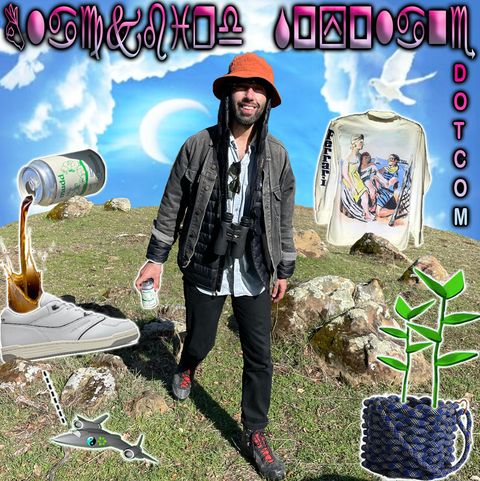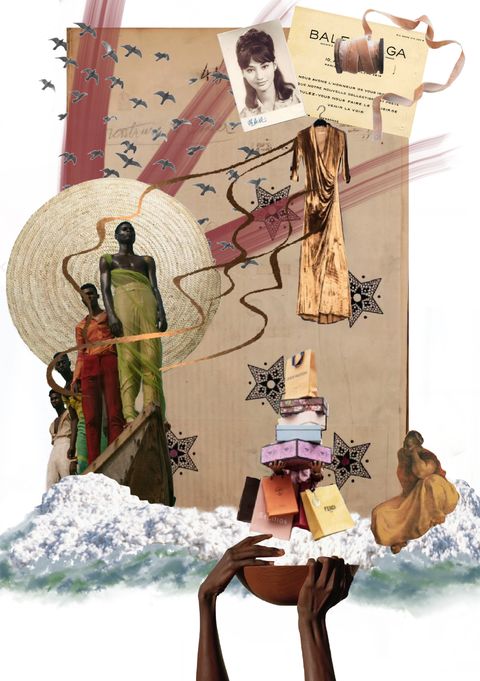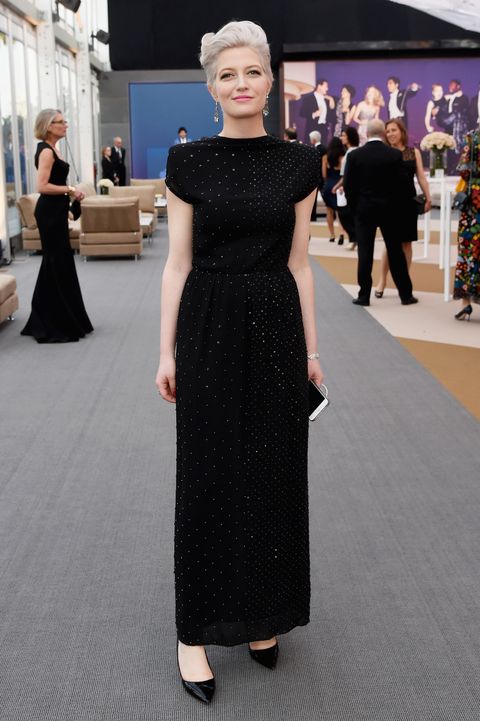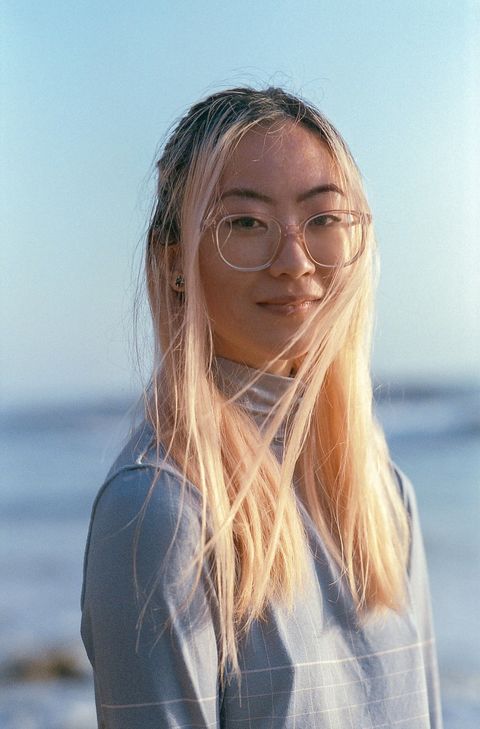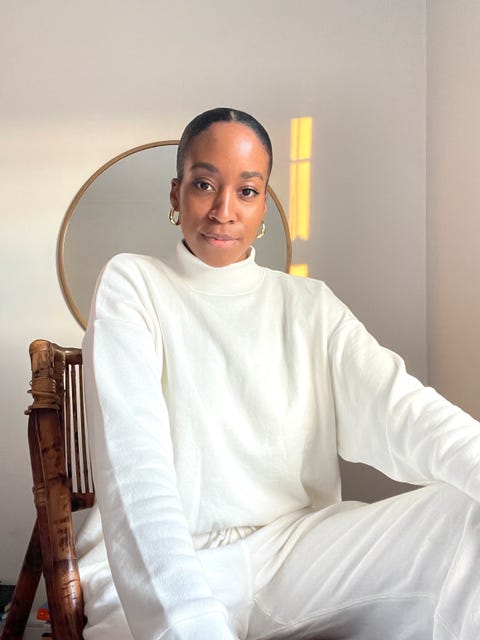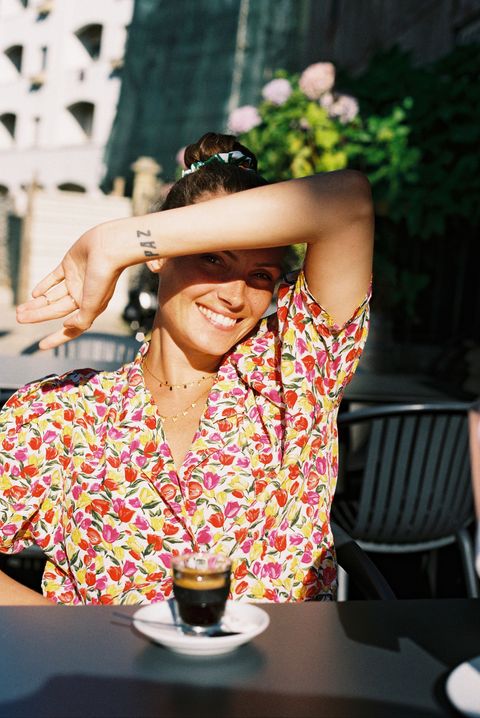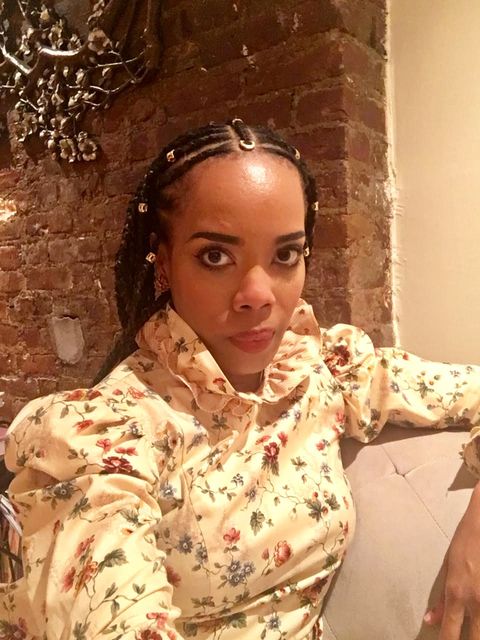Style Points is a weekly column about how fashion intersects with the wider world.
I have long maintained that the worst thing you can do to me is send me an email. But lately, I’ve had to revise that stance to “maybe some emails are good.” Between Molly Young’s books newsletter Read Like the Wind, Hunter Harris’s fun-sized pop culture musings in Hung Up, and Delia Cai’s media dispatches in Deez Links, my inbox feels like it hasn’t since the mid-2000’s—something I actually want to dive into because it might contain a missive from a friend. (I still have friends. They just text me now.)
And of late, there’s been a welcome influx of fashion in my inbox to go along with the existing fiction recommendations, close readings of Haim lyrics, and dose of media gossip. First up is Blackbird Spyplane, from journalist Jonah Weiner and Apple talent scout Erin Wylie, which has scored interviews with human grails from Lorde to Jerry Seinfeld to Phoebe Bridgers and bills itself as ground zero for “‘unbeatable recon’ on dope under-the-radar joints.” Then there’s writer Kitty Guo’s Worn In, Worn Out (“Cool & Conscious Curations from a Gen Z Shopaholic.”) Writer, digital creator, and co-founder of 2BG Consulting Chrissy Rutherford’s Fwd Joy, which doles out astrological wisdom along with coverage of books and mental health, plus occasional fashion and beauty recommendations. Fashion scholar Kimberly Jenkins’s Fashion and Race newsletter, an accessible look at fashion history through a decolonized lens. Writer and model Inês Fressynet’s Slow Fashion Weekly, which promises to “wean you off fast fashion for good.” And GQ staff writer Rachel Tashjian’s Opulent Tips newsletter isn’t in my inbox (it’s invite-only, and I’m still waiting on my invite [taps watch]) but I regularly see tantalizing screenshots of it on other people’s Instagram stories.
Call it nostalgia for fashion blogs, the fact that super-long Instagram captions won’t scratch the itch, or simply burnout from the constant flow of sameness online. But it feels like a looser, bloggier era of homegrown fashion writing has been unleashed, one that has some ‘90s and 2000s antecedents. (Blackbird Spyplane’s Weiner believes his work “definitely resonates with people who miss earlier, stranger, more idiosyncratic eras of the internet.”) And don’t discount the power of intimacy in a socially distanced age. Something that feels like an email from a friend, even if it’s actually coming from a fashion writer you’ve developed a cozily parasocial relationship with, is the warm hug so many of us need right now. “We took a winter break for three weeks,” says Jenkins, “and when we came back, people were like, ‘Oh my gosh, I’m so glad you’re back.’…It’s like a friend that you haven’t seen in a while.”
Substack co-founder Hamish McKenzie tells me that fashion has not been a huge focus for the company thus far. In general, he says, they don’t recruit writers by topic, but instead look for “people who seem like they have the kind of motor for this publishing model.” For newsletter writers, “intensity of devotion is what matters. It doesn’t matter if it’s a huge audience or a relatively small audience, if they’ve got people who show up for them.”
“I don’t think Substack has invented a magic new thing,” he qualifies. But, he says, it is “helping to undo some of the dynamics in the media ecosystem that have given rise to a mass homogenization through Instagram and Twitter and Facebook and the like, that can now be more effectively pushed back against in the same way that was happening in the glory days of blogging.” Once, the next logical step for bloggers was to join a legacy media outlet and assume their audience would follow, or to become influencers and prioritize glossy visuals. Now, it might be to go beyond what McKenzie calls that “self-sustaining” route. He predicts a return to “the golden days of blogging when there were peer-to-peer recommendations and blog rolls. You’re not playing to game an attention algorithm. You’re playing to get nerdy and weird with your most devoted readers.”
Lately, people who write about the weird corners of fashion, as opposed to the trending topic du jour, are the ones gaining traction. For Weiner—whose particular cul-de-sac has become more of a multi-lane boulevard, with Blackbird Spyplane sitting at the top of Substack’s “style” charts—it’s also a chance to inhabit a persona that an early-aughts editor might have termed “voicey.” As compared with the feature writing he does for the New York Times Magazine and other outlets, Weiner calls his newsletter narration “a heightened and hyperbolic version of myself…it strikes a balance between dumb and funny that I get a kick out of.” He particularly appreciates getting to “point this over-the-top voice at knottier questions about aesthetics and politics and ethics,” whether he’s talking about subversively re-appropriating cop gear for an ACAB world or prying apart the distinction between “cool” and “depressing” bootleg fashion.
For Tashjian, Opulent Tips started as a lark. “Most of my friends have gotten an email from me with the subject, ‘WOW: YOU SHOULD BUY THISI!!!’ and a link to some rad thing I found on eBay or Etsy,” she explains, “so I thought, ‘Why not touch even more lives?!’” Rather than opt for a mainstream platform, she simply sends her newsletter out the old-school way, from her email. “Starting a Substack can have real ‘some personal news!’ energy and I love my job at GQ, so I wanted it to be very clear it was a side project by avoiding a platform,” she says of that choice. “I’m also very anti-establishment…GQ is probably the only place I’ve ever worked where I just believe in everything we do like I believe in God and Yohji Yamamoto.” Her tip line maintains a charmingly stream-of-consciousness feeling, in part because she writes most of it hours before sending it out, based on notes she’s jotted down over the course of her week. She’s particularly interested in turning her audience on to lesser-known brands she loves, like Chopova Lowena and Ottolinger. “It’s kind of like if you’re in an art gallery and you say, ‘I wouldn’t want that in my house!!’ she says. “Well, that’s not a valid critique of art, really, but it’s a nice observation. In the newsletter I’m talking about the art that would look great over my sofa.”
Writer Kitty Guo has taken a similar approach, using Worn In, Worn Out to spotlight cool, arcane indie labels that she loves, many of them eco-friendly. “I hope this doesn’t sound really egotistical,” she says, “but people were always asking me, ‘Where’d you get your earrings?’ or ‘Those overalls are so cool.’” She started writing when “I was, like, mourning the death of my journalism career, which is super dramatic, but I had decided that the media world was a bit too unstable for me.” The newsletter became “a way for me to just make sure that I kept writing” without the pressure that might come from a larger publication. (“Anything goes because it’s only me.”) Thanks to a bump from a mention in the media newsletter Study Hall, she now has about 1100 subscribers and a 50 percent open rate. She is not using affiliate links, in part because she mostly features smaller designers, but the project has helped her attract attention from online publications which have commissioned her writing. The newsletter has, she says, become a “calling card” to give editors a feel for her voice and her work.
Chrissy Rutherford, who is a former fashion editor turned digital creator and consultant, initially thought about another common pivot–to podcasting–but opted for a newsletter instead. “I noticed a while ago that a lot of my followers thought that if you want to work in fashion or any particular area, you have to live and breathe that one topic,” she says. “I wanted to show them that it’s okay to be passionate about multiple things.” For her, those include mental health, astrology, and books, not just fashion, though she brings a magazine editor’s sensibility to the edit. And for those who still crave a podcast feeling, she records an audio interview with a guest each month.
Some newsletter writers are using the editorial freedom afforded them not to channel a gonzo voice, promote smaller brands, or pursue niche interests, but to dispense critical takes on an industry that often shies away from critique. Slow Fashion Weekly’s Inês Fressynet has released “issues” touching on everything from how to spot greenwashing to tips for secondhand shopping online. “I wanted to get my writing out as quickly as possible” to an audience of people already interested in the topic, she says. “You’re not fighting constantly to get people’s attention.” She feels able to weigh in on what she wants to write about, and she has more leeway to delve into an industry that has “been hidden behind a curtain of glamour and catwalks,” for her small but loyal audience of 400.
For Jenkins, who created the Fashion and Race Database to, as its mission statement says, “challenge mis-representation within the fashion system,” the Fashion and Race newsletter is a way to highlight stories from that larger project while cutting out the noise that comes with social media. The newsletter is “a very stripped-down way of writing a letter to my community,” she says. “It’s like a mini digital magazine.” Past issues have highlighted a story on contemporary Native fashion and an op-ed about the problem with all-Black runway casting. Without a social media component, Jenkins says, she doesn’t have to be concerned about trolls or “randos bursting in and insulting the things that I have to say.” Even better, “I don’t have to worry about trying to pitch myself to other larger publications to ask if I can use their space or their stage to have these conversations. I can just do all this on my own, and I’ve got a following that’s growing.”
Though their subscriber bases range from the massive (Weiner says, “our circulation is enormous and it includes a staggering number of powerful people;” it also boasts a paid tier) to the small-batch (a few hundred subscribers for Tashjian: “I can’t be bought. I make no money from this and I hope to God I never do!!!”) the reward comes more from creating a community of loyal readers who are engaged, and not in the cheesy, likes-to-followers-ratio sense. Jenkins measures her audience in influence: “There’s a veteran journalist who just started following us,” as well as “a successful museum curator,” a stylist whose work was seen on the most recent Golden Globes red carpet, and “a famous singer.” For these writers, even better than a massive platform or a following of boldface names is the trust that audiences will follow them down the garden path of their particular passions. “I’m so interested in what no one is paying attention to,” says Tashjian. “One of my guiding questions over the past year, in my work and life, has been: ‘How do I become more niche?’ I wonder if others are feeling the same way.”
This content is created and maintained by a third party, and imported onto this page to help users provide their email addresses. You may be able to find more information about this and similar content at piano.io


